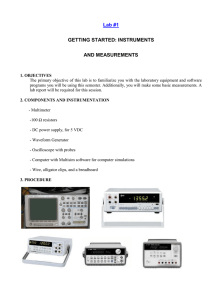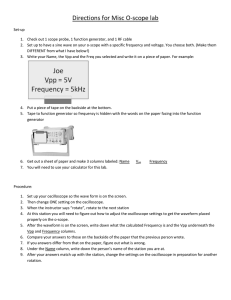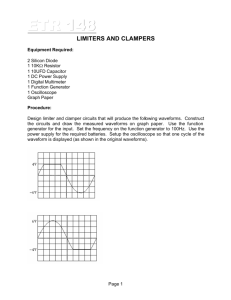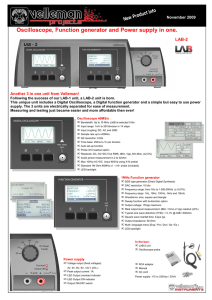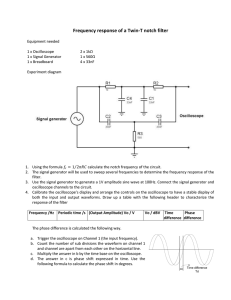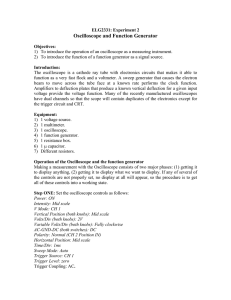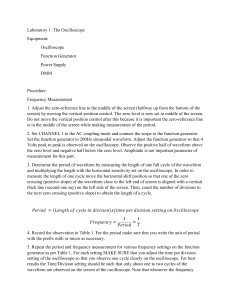2. Circuits with Capacitors
advertisement
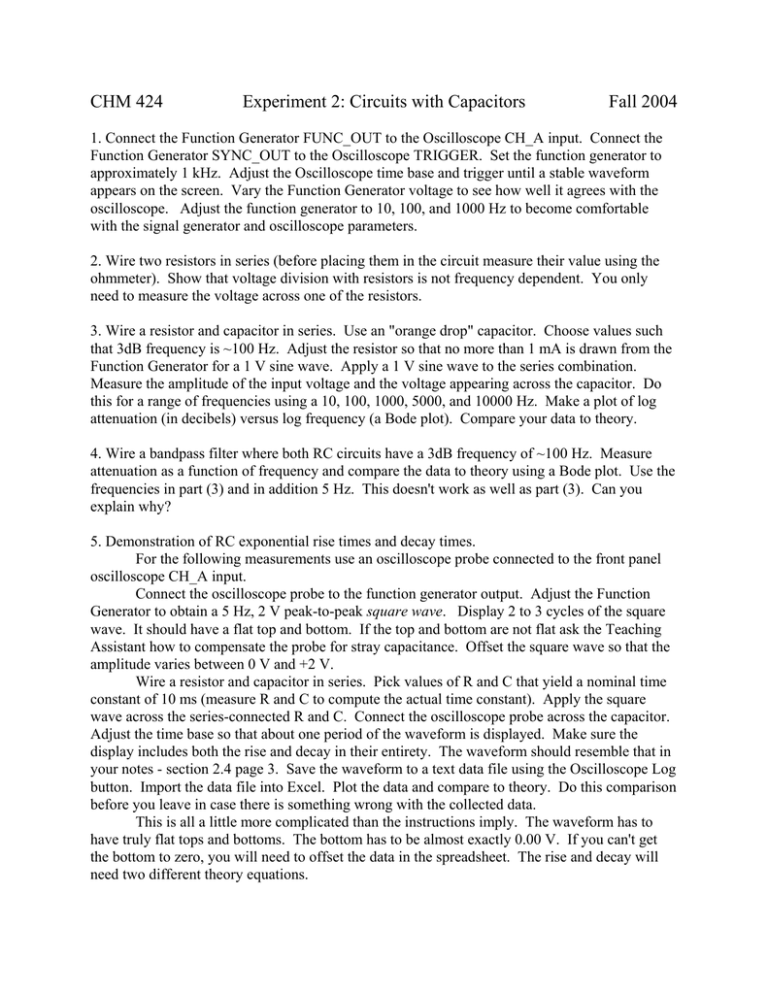
CHM 424 Experiment 2: Circuits with Capacitors Fall 2004 1. Connect the Function Generator FUNC_OUT to the Oscilloscope CH_A input. Connect the Function Generator SYNC_OUT to the Oscilloscope TRIGGER. Set the function generator to approximately 1 kHz. Adjust the Oscilloscope time base and trigger until a stable waveform appears on the screen. Vary the Function Generator voltage to see how well it agrees with the oscilloscope. Adjust the function generator to 10, 100, and 1000 Hz to become comfortable with the signal generator and oscilloscope parameters. 2. Wire two resistors in series (before placing them in the circuit measure their value using the ohmmeter). Show that voltage division with resistors is not frequency dependent. You only need to measure the voltage across one of the resistors. 3. Wire a resistor and capacitor in series. Use an "orange drop" capacitor. Choose values such that 3dB frequency is ~100 Hz. Adjust the resistor so that no more than 1 mA is drawn from the Function Generator for a 1 V sine wave. Apply a 1 V sine wave to the series combination. Measure the amplitude of the input voltage and the voltage appearing across the capacitor. Do this for a range of frequencies using a 10, 100, 1000, 5000, and 10000 Hz. Make a plot of log attenuation (in decibels) versus log frequency (a Bode plot). Compare your data to theory. 4. Wire a bandpass filter where both RC circuits have a 3dB frequency of ~100 Hz. Measure attenuation as a function of frequency and compare the data to theory using a Bode plot. Use the frequencies in part (3) and in addition 5 Hz. This doesn't work as well as part (3). Can you explain why? 5. Demonstration of RC exponential rise times and decay times. For the following measurements use an oscilloscope probe connected to the front panel oscilloscope CH_A input. Connect the oscilloscope probe to the function generator output. Adjust the Function Generator to obtain a 5 Hz, 2 V peak-to-peak square wave. Display 2 to 3 cycles of the square wave. It should have a flat top and bottom. If the top and bottom are not flat ask the Teaching Assistant how to compensate the probe for stray capacitance. Offset the square wave so that the amplitude varies between 0 V and +2 V. Wire a resistor and capacitor in series. Pick values of R and C that yield a nominal time constant of 10 ms (measure R and C to compute the actual time constant). Apply the square wave across the series-connected R and C. Connect the oscilloscope probe across the capacitor. Adjust the time base so that about one period of the waveform is displayed. Make sure the display includes both the rise and decay in their entirety. The waveform should resemble that in your notes - section 2.4 page 3. Save the waveform to a text data file using the Oscilloscope Log button. Import the data file into Excel. Plot the data and compare to theory. Do this comparison before you leave in case there is something wrong with the collected data. This is all a little more complicated than the instructions imply. The waveform has to have truly flat tops and bottoms. The bottom has to be almost exactly 0.00 V. If you can't get the bottom to zero, you will need to offset the data in the spreadsheet. The rise and decay will need two different theory equations.
